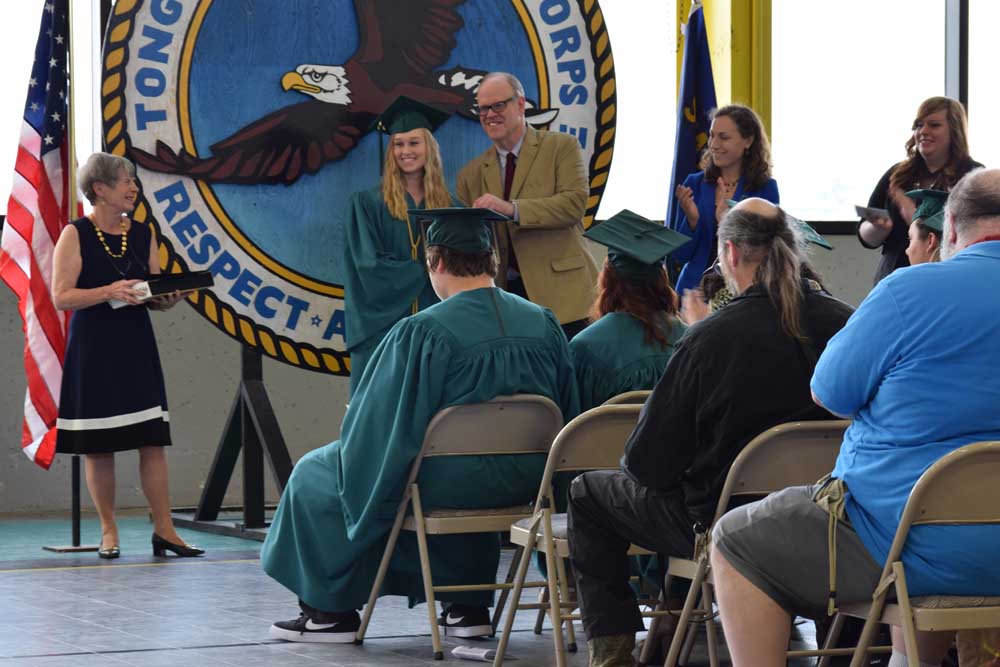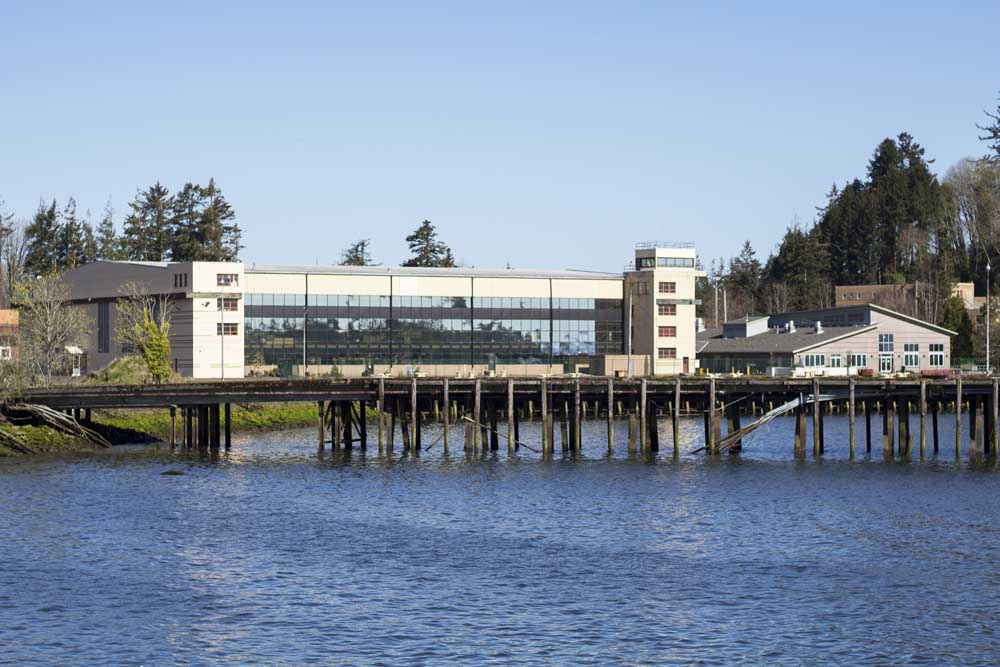Art of the map
Published 5:00 pm Saturday, April 5, 2014
All maps are not created equal — and the ones Dave Imus makes are more equal than almost anybody else’s.
Imus, a 56-year-old cartographer who has lived in Eugene nearly all his life, is a highly decorated mapmaker whose work is half science, half art and all beautiful.
He’s won top honors for his maps four times: most recently in 2010 for the “best in show” award from the Cartography and Geographic Information Society for his Essential Geography of the United States of America; in 2002 for his rendition of Chugach State Park in Alaska; in 1998 for the state of Oregon; and in 1995 for an up-close look at the terrain of the Wallowa Mountains.
These and many of his other maps are hanging on the walls at the Out on a Limb Gallery in downtown Eugene, where they’ll be on display through April.
To those who think of a map as what pops up on the smartphone screen when an address is thumbed onto its tiny keypad, think again.
As far back as 1000 B.C., a clay tablet from Babylonia depicted the Earth as a flat circle. Gerardus Mercator’s Projection of 1569 approximated the world on a cylinder, with lines of latitude and longitude so sailors could navigate by it.
Mapmaking took a great leap forward in the early years of the 20th century when aerial photography became possible, and another in the latter half with the advent of satellite imagery and computer technology.
When Imus first enrolled at the University of Oregon, where he graduated in 1982 with a degree in geography, cartography was still a labor-intensive, somewhat cumbersome process — and he loved it.
“Back then, we used pen and ink on layers and layers of mylar, each one adding something new, such as streams and drainage, different sizes of roads, boundaries and type,” he said. “We used what were called ‘railroad pens,’ which were tiny parallel metal prongs that held ink between them, and those would be used to put highways on maps.”
Every letter was hand-written, using Le Roy lettering, which consisted of a ruler with cutout shapes of all the letters on it in various type sizes, Imus said.
“You would slide the ruler into position and then use a technical pen with a point like a needle that would go down into the letter and ink it in.”
All the layers had to be held together exactly in the right place with pins, no mean feat in cases such as Imus’ 1998 state of Oregon map, which had 250 layers that had to be kept precisely aligned.
Even that recently, “Everything was still done by hand, because computers weren’t powerful enough yet” to handle all the data, he said.
Now they are, and many of the old mapmaker’s tools have been retired. But computerization doesn’t necessarily improve the quality of maps, much less make them aesthetically pleasing, Imus said, which is why he still personally edits and lays out every bit of data that goes onto his maps.
“I use the computer as a drafting tool,” he said. “I create new maps — I don’t start with maps that are already done. When I finish, I have worked with every piece of type and seen every bend of every stream.”
Some of the most prominent mapmaking companies shovel as much information as possible onto their maps “because it’s quick and easy and they have the data in their computers, but the end result is a lot of ‘noise’ that people find hard to comprehend,” Imus said.
“When people were doing maps by hand instead of computer, they chose what information they wanted to include and really made their maps their own,” he said. “But these days, most American cartographers focus on the technology and the science — they love getting data and putting it all on the map. The ‘art’ part many times is lost.”
It’s the art that takes the time. Both Imus’ Oregon and U.S. maps took more than 5,000 hours to complete.
His philosophy of mapmaking “is to make the world more understandable.”
Imus points at the Denver area on his 2010 U.S. map. “You can see a lot more here than the location of Denver,” he said. “You learn that Denver is a mile high (in altitude), that it is the center of a large urban area with many suburbs and that it is the capital city. If you decide to go to Denver, you already have a basic grasp of its geography.”
When he designs a map, Imus’ goal is “to inspire interest in geography itself.”
“I show the principal places in an area, based on population — not every single little town — so you can look at one of my maps and immediately see where the greatest densities of people are,” he said.
That leaves plenty of space to relate population to other information such as topography, natural features such as rivers and lakes, open land where crops may be grown and how the road system serves the area and connects with other places.
His maps differ from many in the visual neatness that comes from having every place name written perfectly horizontally, in contrast to many that shoehorn names in diagonally or curve them around for fit, giving them a chaotic look that the eye has trouble comprehending, Imus said.
He also likes to include “landmarks” on his maps, which he distinguishes from “points of interest.”
When he did the U.S. map, “the funnest thing was the landmarks,” he said. “I have more than 1,000 of them on the map, from the Statue of Liberty to the Delicate Arch (in Utah) to the Oregon Country Fair (near Veneta). These things are all icons, and knowing that they’re there gives people a much better sense of the place.”
That may be why Seth Stevenson called Imus’ national map “the greatest paper map of the United States you’ll ever see” in an online Slate article on Jan. 2, 2012, wreaking a nice kind of havoc on Imus’ up-to-then quiet cartographic existence.
“Can one paper wall map really outshine all others — so definitively that it becomes award-worthy?” Stevenson asked rhetorically. “I’m here to tell you it can.”
When the article appeared, Imus and Nancy Waggoner, who serves as assistant and customer service representative for his business, Imus Geographics, were in California’s Yosemite Valley on vacation.
“My cellphone was dead, so we knew nothing about what was going on,” Imus recalled. “We left Yosemite that day and drove over Tioga Pass, where people were ice skating on the lake. We got to Susanville, and I charged my phone, and people were calling me and telling me my website was down.”
What had happened was a sudden craze over his maps, to the tune of 141,000 hits that crashed the site.
“The whole server crashed, and the company that provided it dumped us,” Imus said.
He called friend and colleague Pat Dunlavey, who lives in Massachusetts and had created the website, who found a more powerful server and got the site back on the Internet.
Another friend, Dave Leonnig, who’d been a buddy since high school, also pitched in.
“That was very exciting, but we just weren’t prepared to handle it,” Imus said.
“We were getting 150 emails a day — Nancy was handling all the marketing at that point — and we already had 15,000 people who we had to tell that their maps would be sent but with a delay, because the fulfillment company I was using could only handle 400 mailings a day, rolling the maps, putting them in tubes, addressing them and getting them out.”
So much money came in for orders during that period that the credit card processor Imus used told him “it looked like fraud” and enforced a cap on his transactions.
“The fulfillment people were great — they were all maxing out their personal credit cards to help,” he said. “It took until February to get everything evened out.”
During that time, Imus Geographics was getting calls from news outlets and TV shows, including “The Colbert Report.”
“We were all set to go back to New York to be on Colbert, but at the last minute it didn’t come through,” he said. “They finally said, ‘There’s nothing really humorous to say about making maps, nothing we can make fun of.’?”
Imus had been interested in maps in a casual way since childhood.
“I used to find places on the map to go with my dad to fish,” he recalled. “It’s kind of like mathematics — everything is precise.”
He graduated from Churchill High School in the mid-1970s and enrolled at Lane Community College, where he “was one of those people who stays there for five years,” Imus said, but it was in his classes there that he found his calling, “where I discovered I was a geographer.”
Turning that into cartography took a few more years. Needing a job after graduating from the UO, Imus contacted a map distributor who sold road maps up and down the Interstate 5 corridor.
“I went to him and asked if I could sell maps for him,” Imus recalled. “He said he really needed someone to make maps, of smaller places, like Roseburg.
“I said, ‘I can do that.’ I did my first map, of Roseburg, in 1983. And that’s how it started.”





